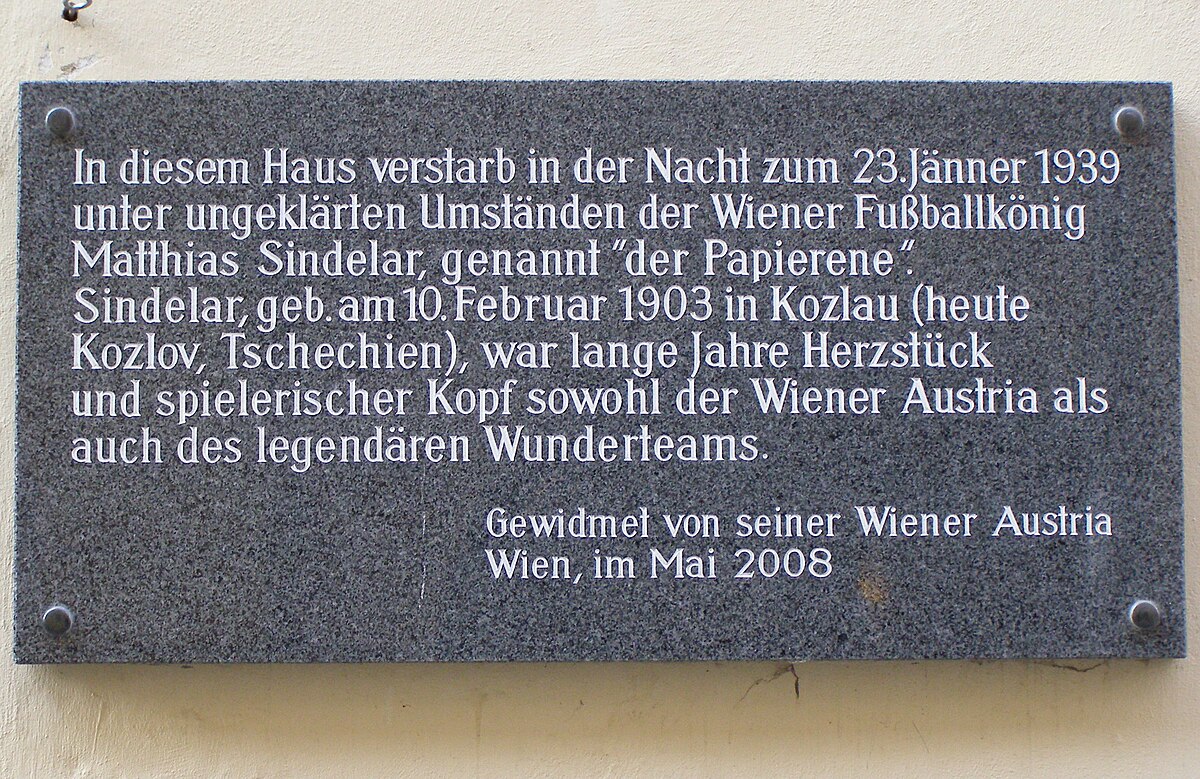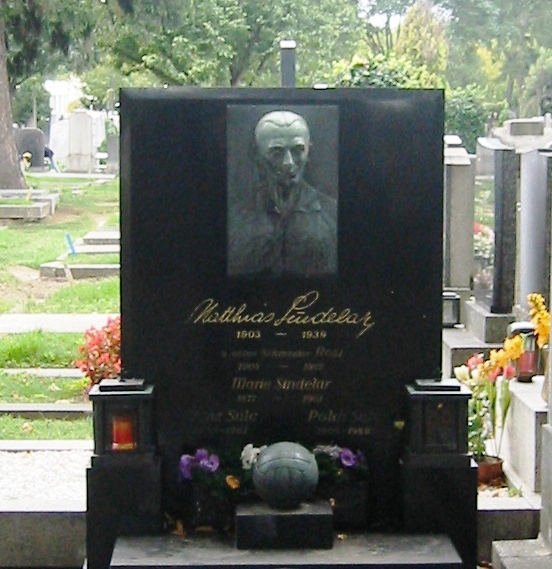Matthias Sindelar, the footballer who said no to the Nazis
Originally from what is now the Czech Republic (he was born in Kozlau in the Austro-Hungarian Empire in 1903), Matej Sindelar emigrated with his father, a bricklayer, his mother, a washerwoman, and his three sisters to the working-class district of Favoriten in Vienna. He showed a talent for playing football, first on the streets, and then in odd jobs after his father was killed on the Front in the Wehrmacht. This anonymous fate was to change when his talent was spotted by the directors of Hertha Vienna. After playing for several years in the club’s youth teams, he signed a professional contract in 1922, compensating for his frail physique with a gift for dribbling and top vision of the game. But it was at another Viennese club, Austria, that his reputation grew from 1924 onwards. For fifteen years, he not only played for the club, but also for the Austrian national team, playing 43 times between 1926 and 1937. His talent made him one of the best European players of the 1930s, and Austria, the wunderteam, one of the best and most spectacular teams in the world. Injured by a premeditated violent gesture from an Italian defender during the semi-final of the 1934 World Cup, he let victory to the Mussolini’s squadra azzura which won the competition at home. However, his career was busy until March 1938, which was the turning point in his life: he was 35 years old and Austria, invaded by Nazi, experienced the Anschluss. His national team no longer exists.
It is in this context that Matthias Sindelar demonstrates extraordinary commitment. First, during a masquerade match, organized by the Nazis who decided a “reconciliation derby” between ex-Austria and Germany. Known as the “Anschlusspiel”, everything had been arranged, the meeting having to end in a friendly 0-0 to testify to the brotherhood of the two peoples. But Matthias Sindelar does not see it that way. In Prater stadium full off in Vienna, in the presence of German dignitaries, he decided to ridicule the much weaker Mannschaft by performing a festival of dribbling and feats. He goes so far as to deliberately miss goals after having eliminated all the German players to show that the match is arranged. Then, encouraged by part of the public, he finally decided to score in the 70th minute by celebrating his goal in front of the official stand. Austria won 2-0, breaking the secret pact imposed.
Then, beyond this symbolic moment, Matthias Sindelar went further: he refused to join the German team for the 1938 World Cup in France, inventing an imaginary injury. Germany were eliminated in the first round by Switzerland, without being able to benefit from the talents of the Austrian star, who became the target of hate. In the summer of 1938, he was hunted down and forced to go into hiding, especially as his partner was a Jewish Italian. They were both found suffocated to death on 23 January 1939: although there was never an official version, there were strong suspicions that the Gestapo had murdered them. Other theories suggest suicide. But Matthias Sindelar was not forgotten: the funeral of the footballer who said no to Nazism drew 15,000 people and, since then, every 23 January, a tribute has been paid at his grave.
Yvan Gastaut



